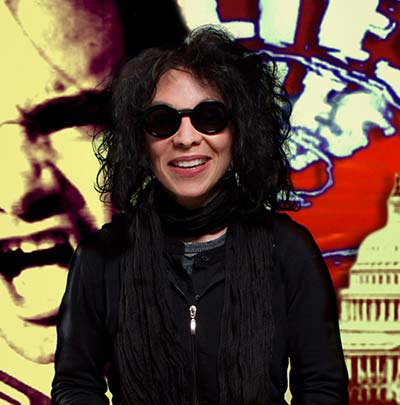|
Kasumi, Artist 2014 MID-CAREER VISUAL ARTS
“My parents helped me tackle concepts and questions from wildly different points of view. This helped me later in life to navigate difficult problems through divergent, creative and analytical thinking,” she observes. After studying art with esteemed American painter Bill Kohn in St. Louis and music at the Stadliche Musik Hochschule in Cologne, Germany, she traveled to Japan, where she taught Baroque music at the Tokyo College of Music, performed as a soloist throughout Japan, Europe and the US and recorded four LP albums. While living in Japan, she began to refine her interest in writing, painting and drawing. Her illustrated parody of life in Japan, The Way of the Urban Samurai, was published in Japanese by Kodansha, Ltd. in 1986 and in English by Charles E. Tuttle, Inc. Publishers in 1992. While simultaneously pursuing her work in painting and set design – and at the same time raising a son – she continued to publish writings on music, politics and social issues for the Asahi Shimbun, The Japan Financial Journal, The Early Music Quarterly Tokyo, The Philadelphia Inquirer, Sacramento Bee, The Plain Dealer, The McLatchy Wire Service, Remix Magazine and others. When her career turned to filmmaking in the late 90’s, her experimental works quickly gained worldwide attention at international festivals, galleries and museums. Rather than separate one art form from another, she made use of all of them, each informing the other. Ultimately Kasumi created and developed a unique hybrid media art, cinematic assemblage. The work is musical in form, complexity, and phrasing; literary in its symbolism and metaphor; and artistic in its depth of concept and emotion. After being awarded a Guggenheim Fellowship in 2011, she embarked on a feature-length film project, Shockwaves. A genuinely new and original work of media art, Shockwaves is a cinematic tour-de-force that masterfully depicts a story through stream-of-consciousness. Deploying an astonishing 25,000 plus short public domain film samples, rotoscoped film clips, original dance choreography, animation and evocative sound design, Shockwaves evokes the intense and unsettling experience of epiphany-like memories through powerfully articulated themes of identity, exile, abandonment, homecoming, disguise and temptation. “Our media-saturated culture has created a kind of lexicon of symbolic sounds and images – the everyday habitual gestures that are now second nature to just about anyone living on this planet,” observes Kasumi. “I synthesize this rich vocabulary into a metaphorical language that resembles the stream of subconscious connections making up human perception.” Artist, critic and Cleveland Arts Prize winner Douglas Max Utter, who has written about her critically acclaimed experimental films Breakdown and Shockwaves, says of the characteristically multi-layered complexity of Kasumi’s work: “It’s definitely worth figuring out. Her films grow richer and richer the more you examine each part of them and that is a function of some sophisticated editing software and the countless hours of work she puts into them. Each one is an astonishing achievement.” After completing Shockwaves in 2013 Kasumi shifted into creating smaller works including “Perpetual Loops“ that were represented by The Gallery at Gray’s at Miami Art Week and the Unpainted Media Art Fair, Munich. Her film Intersection debuted at the Museum of Contemporary Art, Krakow, Poland and traveled to 21 more eminent art institutions in Europe during April and May, 2014. For over a year, her work has been broadcast on French Arts TV La Télédiversité #Numero23. Earlier this spring, a selection of her Perpetual Series was installed in the historic grand opening of the iconic DC Tower 1 in Vienna, Austria. The works were described by the collector as “bold, innovative, hypnotic, cathartic, maddening, clarifying, calming, confusing, baffling, laughingly and seriously human, ironic, iconic, eternal, ephemeral, epic and so Hollywood!” Explains Kasumi, “Art allows me to reinvent narrative as a multi-dimensional tapestry of thoughts, associations and potentials moving through time and space. Through art I am able to express the un-expressible and see, hear and feel the unknowable.” |
